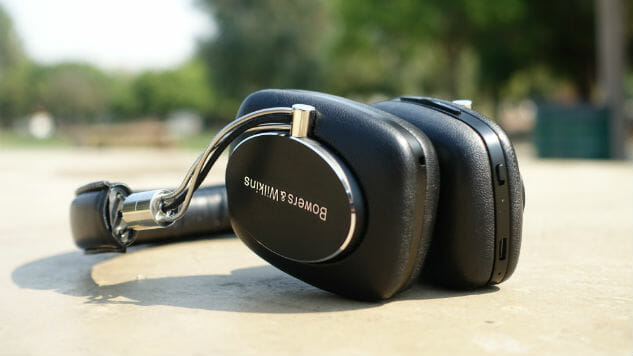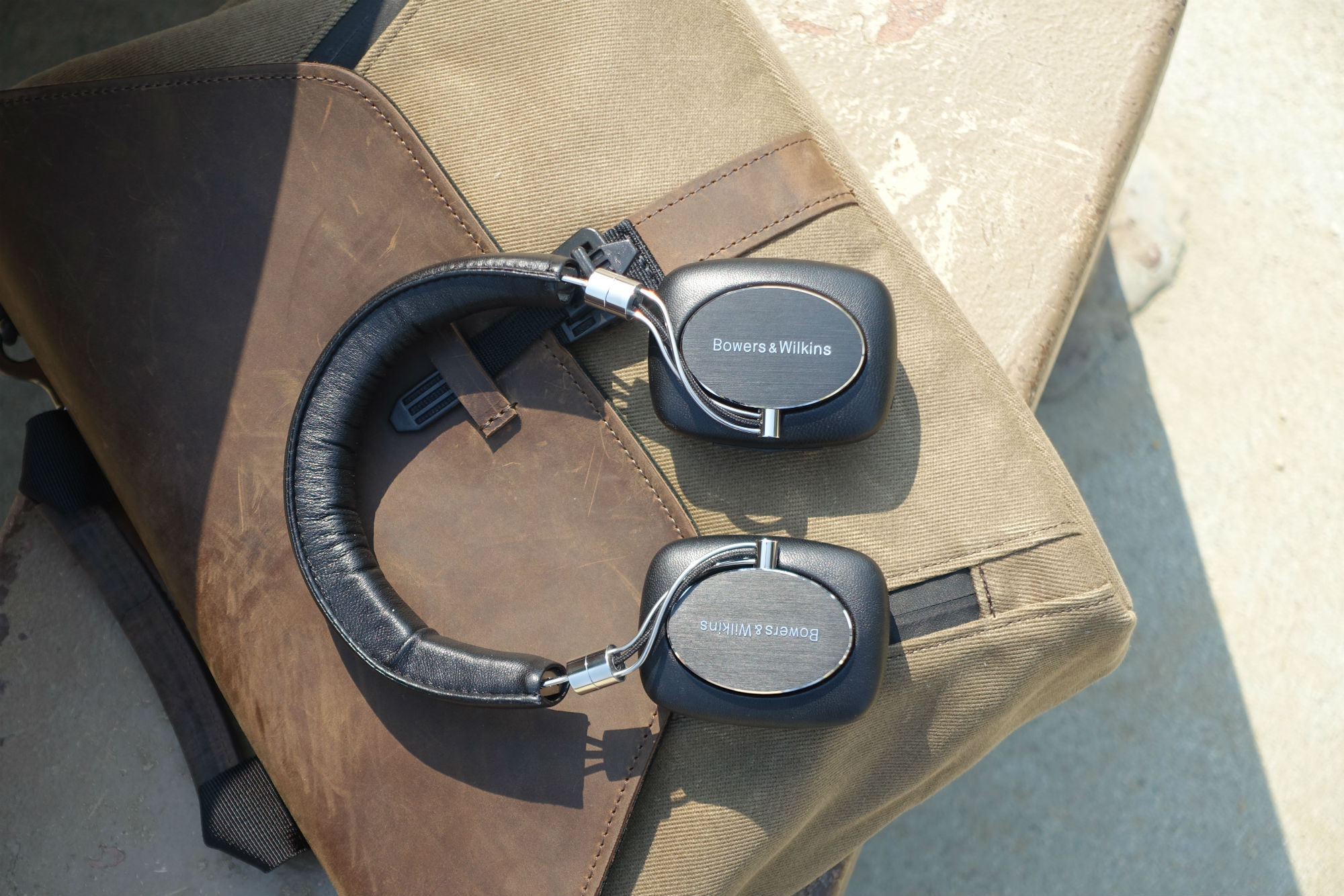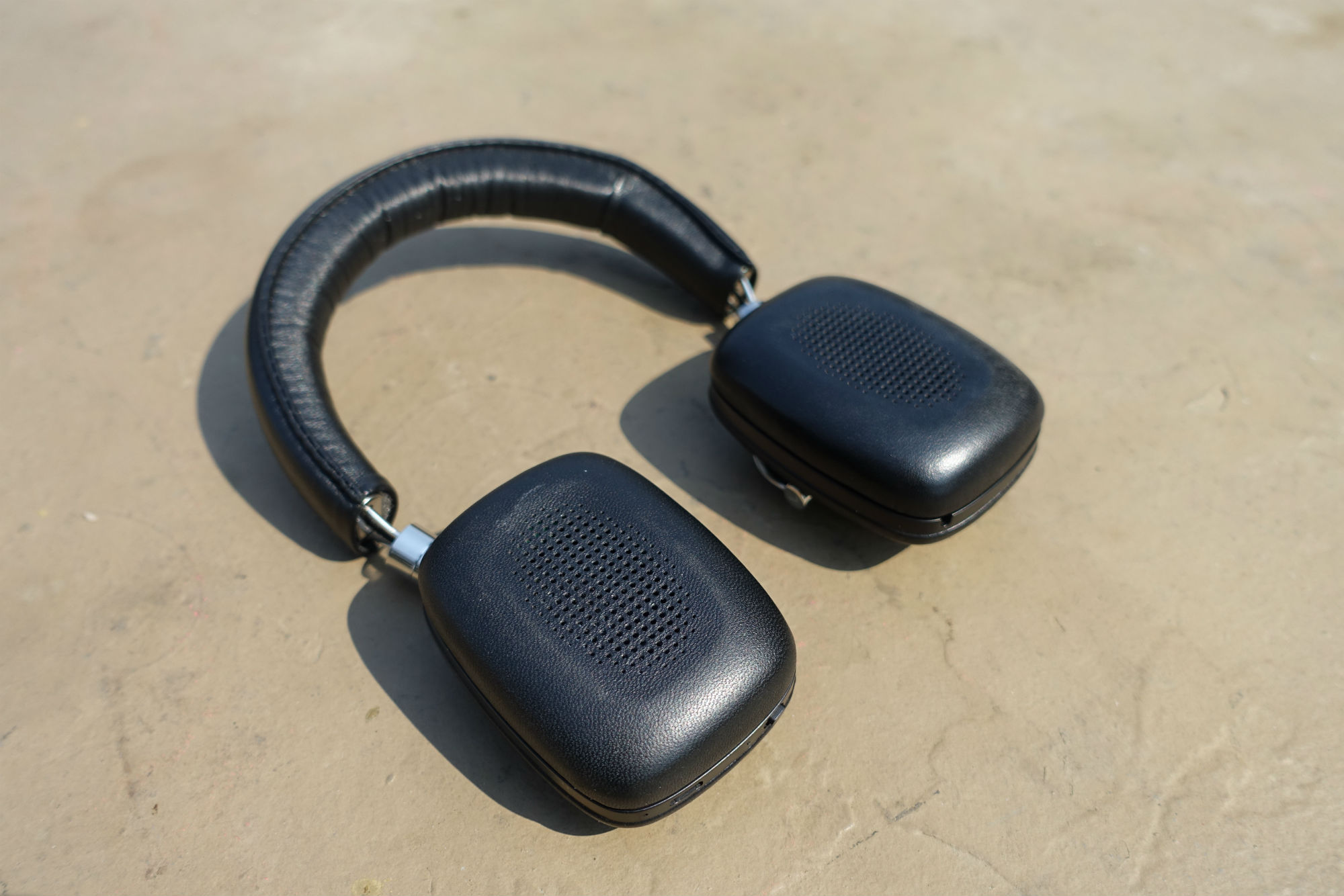
Audiophiles looking to disentangle themselves from messy wires will find a lot to like from Bowers & Wilkins’ P5 Wireless headphones. With smartphone manufacturers dropping the audio jack from popular models, like Lenovo’s Moto Z, purchasing a set of wireless cans may be a sound investment for the foreseeable future.
With the P5 Wireless, Bowers & Wilkins had distilled the best features and minimalist retro aesthetics of its luxurious P5 Series 2 model and shed the wires for a truly wireless set of on-ear cans. More impressive, however, is that the P5 Wireless retains much of the audio fidelity of its wired sibling, and the results show—the P5 Wireless sounds just as good as it looks.
Design & Comfort

Since the introduction of the original P5 in 2010, Bowers & Wilkins has kept the retro-infused modern aesthetics of its headphones largely unchanged. Exposed twisted wire frame, rectangular vintage-inspired radio earcups, lambskin earpads and a solid cowhide leather headband still make up Bowers & Wilkins’ signature look, and the headphones’ black and steel finish makes its styling more understated than Apple’s ostentatious Beats 2 Wireless headphones, which are available in a variety of plastic finishes.
At $399, the P5 Wireless costs twice as much as the Apple competition, but the solid construction and use of luxurious materials more than makes up for the price difference. Commuters won’t have to worry about breaking the P5 Wireless when transporting the headphones in a bag, a reassuring feeling that I didn’t have with plastic headphones like the Beats or Nokia’s and Monster’s now discontinued Purity Pro.
While the aluminum construction helps to reinforce the headphones, it also keeps the weight down. At under half a pound, the P5 Wireless feels comfortable when worn on your head or on your neck. Headphone weight was never an issue for me, and the metal frame is stiff enough to clamp comfortably on your ears for normal listening sessions.
The P5 Wireless doesn’t pack active noise cancellation, like Bose headphones, but the cans do a good job of keeping out outside noise thanks its earcup design. The lambskin-lined memory foam earpads conform to your ears—and the headband provide enough pressure to seal outside noise from getting in without feeling uncomfortable. The earpads are removable, and they attach via magnets.
For on-ear headphones, I found the P5 Wireless to be comfortable, but nearly as comfortable as over-ear models. Because on-ear headphones put a certain amount of pressure on your ears, the P5 Wireless aren’t as comfortable for longer listening sessions as over-ear cans, such as the Master & Dynamic MW60 or Bowers & Wilkins’ wired P7 flagship headphones.
Another factor affecting comfort is the choice of materials. Even though the lambskin earpads give the P5 Wireless its elevated aesthetics, the material could also make your ears sweat on a hot day. If you find the headband clamps too tightly over your ears, you can break in the P5 Wireless by bending and twisting the P5 Wireless. The metal and leather construction allows the headband to flex without damaging the headphones.

When paired with a smartphone, the built-in microphone on the P5 Wireless allows you to take calls without having to take off your headphones. The P5 Wireless actually has two microphones to help cancel out background noise when you’re in a call. You can even use the mic to activate Siri.
Inline controls are found on the back of the right earcup. There are three buttons for music control, and the power and Bluetooth slider is located at the bottom. The P5 Wireless can be recharged via a micro USB port on the bottom of the left earcup.
I found the inline controls helpful when I am on a crowded train commute and my phone is stowed in my bag or pocket. Normally I prefer to use my phone to skip between tracks.
For travel, the earcups swivel, allowing the P5 Wireless to lay flat, but the headphones don’t collapse or fold up. The limited range swiveling motion of the cups also help the P5 Wireless rest comfortably against your ears when worn. I wish that the range of motion was wider. When I wear the headphones around my neck, for example, the range of motion means that the outer metal shell of the headphones rests against my collarbone.
I had hoped that the range of motion would allow the headphones to swivel so that the softer leather cups would rest against my neck, which would provide a more comfortable experience. If you don’t wear your headphones around your neck when you’re not listening to them like I do, you won’t be bothered with this.
Audio

Audio is driven by two 40mm full-range drivers in the P5 Wireless. Bowers & Wilkins uses the same suspended diaphragm technology from the flagship P7 headphones, delivering the same sound precision found in traditional speakers, but in a more mobile package. The drivers deliver a frequency range of 10 to 20kHz and an impedance of 20ohms. The P5 Wireless also supports the AptX protocol for near lossless wireless audio streaming.
Like the wired model, the P5 Wireless delivers a balanced, but neutral, sound profile. It isn’t bass-heavy, but the P5 Wireless does a great job of delivering punch bass, detailed mids and crisp highs. The neutral tuning means you can listen with the P5 Wireless for extended durations without fatigue.
Audio quality in Bluetooth mode is almost as good as the wired P5 Series 2, with both models delivering a wide soundstage. On jazz tracks, I can discern the artist’s breathing, raspy vocals and deep bass. Bowers & Wilkins did a fantastic job of keeping the hissing noise—a complaint with many Bluetooth headphones—down, and it was barely discernible.
If you want to elevate your audio experience even further, connecting the included 3.5mm audio cable essentially transforms the P5 Wireless into the P5 Series 2. The connector for the cable is found underneath the earpad. You’ll need to remove the magnetically-attached earpad by pulling on the magnet. Unfortunately, because of the bent connector shape, you’ll need to use Bowers & Wilkins’ cable—an off-the-shelf cable may not fit properly inside the groove.
With the cable connected, the P5 Wireless performs just like the laudable Series 2, and the wired mode offers audiophiles flexibility—you can go wireless with more modern phones and have a richer audio experience with wires when you prefer to listen with a DAC.
Bowers & Wilkins rates the P5 Wireless for 17 hours of battery life, and I found those claims to be accurate. I clocked north of 16 hours of non-continuous wireless use. In general, I found Bluetooth performance to be good, but nowhere as good as the the excellently engineered radio design from the Master & Dynamic MW60 that we previously reviewed. Even though I can go for about 10 feet without any drops, simply jostling my phone around in my backpack or shifting my phone between different pockets can cause some hissing noises. In general, if you’re not wandering long distances away from your audio source, you won’t find much—if any—issues with the P5 Wireless’ Bluetooth radio and antenna.
Verdict

By distilling the best features of the P5 Series 2, Bowers & Wilkins managed to cram the best features and excellent audio performance of its wired headphones into a wireless package. Shedding the wires gives the P5 Wireless more flexibility, especially in a transition period when smartphone manufacturers are rumored to ditch the 3.5mm audio jack.
Even though the P5 Wireless delivers a high level of audio fidelity wirelessly, audio purists can still experience high quality music by plugging in a cable into the headphone, essentially transforming the wireless cans into the P5 Series 2. Listening to music with the cable will give you higher audio fidelity than over Bluetooth, but with the P5 Wireless, you’ll be able to disentangle yourself from messy wires when you need too without sacrificing on quality.